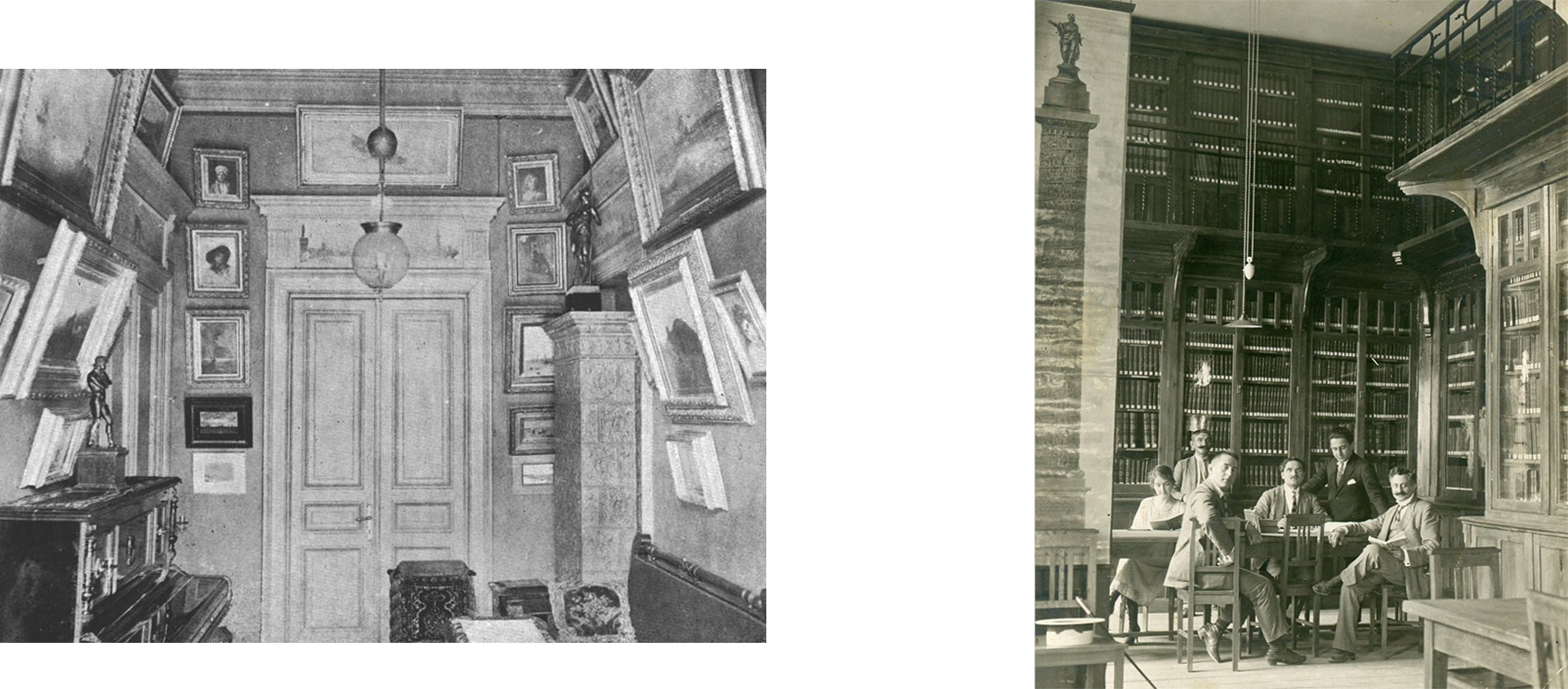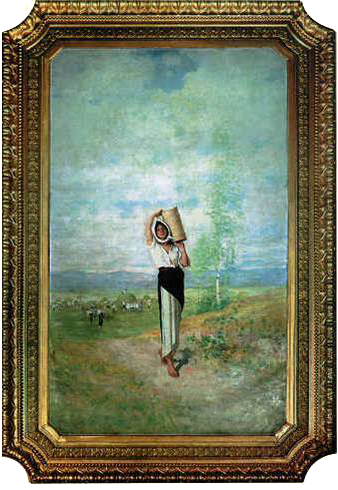Over the centuries and all over the world, central banks have combined financial activities with supporting culture, and have been holders of numismatic and art collections. This is also the case of the National Bank of Romania.

Inside the house of Eugeniu Carada (left) | The I.G. Bibicescu library in Turnu Severin (right)
The bank has set up, ever since its first years of functioning, a valuable collection of coins and works of art, while having passionate collectors as leaders; and may we remind here the founder of the bank, Eugeniu Carada, a great admirer of Romanian painter Nicolae Grigorescu, governor Mihail Sutzu, one of the originators of Romanian numismatics, and the sophisticated book-lover governor I. G. Bibicescu.

Numismatics works published by Corneliu Secășeanu
Thus, the idea of establishing its own museum has come up naturally. In 1933, Corneliu Secășeanu, a scholar and a renowned numismatist, was appointed conservationist of the bank’s collections. Lacking an adequate exhibition space, he mainly focused his activity on evaluating and scientifically organizing the objects in his administration, as well as writing specialized articles publicizing numismatics.
In 1942 the Numismatic Museum was assigned “one of the great halls of the main building in Lipscani Street”, armored doors ensuring the security of the exhibits. The items were displayed in 30 oak wood showcases with leaning exhibition panels, each showcase being divided into compartments.
The outburst of World War II prevented the opening of the museum and therefore the coin collection, the art objects and the archive of the bank were transported “by two vans and a truck” to the NBR agency in Turnu Severin, to be later on moved, due to the bombing of the city, to a vault in Sinaia.

Record regarding the planning for the evacuation of the paintings collection
On 14 April 1945, after the above-mentioned cultural items were returned to the headquarters in Bucharest, the Board of Directors of the NBR decided the establishment of a Museum Division, sub-divided into four sections: Numismatics Museum, Paintings and Sculptures, Carpets and Tapestries, Documents.
The Museum was given a hall on the first floor of the Old Palace, where collections could be visited and explored without restrictions. It was during that period that the patrimony of the museum increased significantly. Through exchanges with the National Mint, the NBR Museum received 155 new medals, while giving 98 pieces of its reserve medals in exchange. Among the most important purchases at the time was the collection of Pericle Papahagi, comprising 12,202 ancient coins, 87 paintings and 3 sculptures.
Even though the value and importance of the museum collections were highly appreciated, both by the Romanian public and by foreign delegations visiting Romania, the designated space on the first floor proved to be improperly situated, thus preventing a good functioning. The museum was shut down and the collections were deposited in the bank’s vault.

Aureus, Roman Empire, Trajan
Due to the enforcement of a new gold regime, by which the proprietors, who could not obtain authorizations for owning such precious objects, had to depose them at the National Bank receiving a state compensation in return, the museum collections increased significantly. Inventories of the day state the existence of 28,730 coins, 173 archeological items, 3,612 medals, 9,296 banknotes, 177 silver objects. The art collection comprised 99 paintings signed by Nicolae Grigorescu, 15 by Ion Andreescu, 16 by Theodor Aman, 24 by Ștefan Luchian, 17 by Gheorghe Pătrașcu, 15 by Nicolae Tonitza, and another 451 paintings by Romanian and foreign authors, alongside engravings, drawings and sculptures.

Rodica – At Harvest, Nicolae Grigorescu
In this context, in 1949 it was decided that the Museum of the National Bank of Romania should be reopened for the public, this time in the “building with columns” in 22 Calea Victoriei, a building that, at the time, was owned by the National Bank of Romania. An approval thereof by the Academy of the People’s Republic of Romania was requested. However, the response of the Academy’s representatives was not favorable, stating that the exhibition “would amplify the Latin origins” of Romania, an aspect that was shunned and understated by the leaders in Romanian culture at that time. Consequently, the opening of the museum did not take place.
The fall of 1952 would bring along the completion of the new palace located in 8 Doamnei Street and would enable the bank’s leadership to move into these headquarters while vacating several spaces in the Old Palace which could have been used for the Numismatic Museum. Nonetheless, this plan never came into being as the Ministry of Finance, left without its headquarters, was moved into the spaces of the National Bank of Romania in 8 Doamnei Street.
Under the pretext that the Central Bank of the USSR did not have its own museum either, the Museum of the NBR was closed down and all its collections transferred to the Numismatic Cabinet of the Academy of the People’s Republic of Romania and to the National Museum of Art. The coin collection comprised 37,431 coins, 150 archeological artifacts, 4,442 medals, 48 decorations, 808 badges, 11,194 banknotes, and 712 books and specialty magazines, while the art collection included 280 paintings, 6 tapestries and 62 sculptures.
In 1954, the staff of the Museum of the National Bank of Romania - Mr. Corneliu Secășeanu, Mrs. Ileana Băncilă and Mr. Octavian Iliescu - was transferred to the Library of the Romanian Academy. Thus, the first stage in the existence of the Museum of the National Bank of Romania came to an end.
After 1990, the National Bank of Romania has resumed its rich tradition of supporting essential fields in the society of which it has been part, by promoting art, science and education. In this context, the inauguration of the Museum of the National Bank of Romania on 3 May 1997 has been both an act of culture and an homage brought to its forefathers, a crowning of all their efforts in this respect.